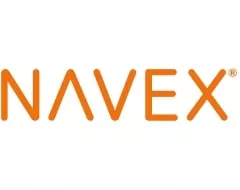As 2025 approaches, compliance and risk management professionals must stay vigilant amidst escalating workplace challenges. Among the Top 10 Trends in Risk and Compliance for the upcoming year, two critical issues – rising workplace tensions and violence in the workplace – demand attention. Below is a snapshot of how these trends shape policies and strategies in organizations worldwide.
Rising temperatures in the workplace: Addressing civility concerns
Workplaces increasingly mirror the polarization we see in the world, with tensions surrounding diversity, equity and inclusion (DEI), environmental, social and governance (ESG) initiatives, and political differences bubbling to the surface in workplace discord. Ideally, the workplace should be a collaborative environment, but now is a minefield of potential heated disagreements, making workplace civility a top priority for organizations.
1. Causes of rising tensions
Discussions around DEI and ESG, previously seen as progressive and unifying, have become divisive, with people holding varying beliefs about the importance and implementation of these initiatives. Similarly, political debates often infiltrate workplace conversations, creating friction.
2. Whistleblowing insights
Recent NAVEX data from reports and inquiries received highlight increased complaints related to harassment, discrimination, and incivility, often tied to these contentious topics. Employees are using internal channels to report behaviors they view as intolerant, with many facing retaliation, further exacerbating workplace discord.
3. Strategies for employers
Organizations must adopt a multi-faceted approach to defuse tensions:
- Promote open dialogue: Set boundaries for respectful conversations, ensuring employees feel heard without fear of attack
- Civility training: Regular conflict resolution and empathy workshops can help employees navigate sensitive topics
- Reframe DEI and ESG initiatives: Emphasize their practical business benefits rather than framing them as political or ideological statements
- Safe spaces for discussions: Create moderated forums for employees to express concerns in controlled environments
- Robust whistleblower protections: Transparent handling of complaints and prohibitions against retaliation are crucial to building trust
Looking ahead
Workplace rifts will likely intensify in 2025 as societal divisions deepen. Organizations must prioritize respect, empathy and inclusivity to manage disputes proactively and maintain harmony. Whistleblowing and accountability will continue to rise, making civility and effective conflict resolution essential elements of workplace culture.
Workplace violence: Compliance, prevention, and response
The rise in workplace violence incidents is a growing concern across industries, with significant implications for employee safety, organizational reputation and regulatory compliance. Addressing this challenge requires a structured plan to comply with workplace violence prevention laws, taking measures to prevent incidents, and a plan that works in practice to respond to incidents when they occur.
1. Federal oversight and gaps
In the U.S., the Occupational Safety and Health Administration (OSHA) enforces workplace safety under the General Duty Clause. While workplace violence is a recognized hazard, there is no specific federal standard. OSHA has issued general guidelines emphasizing management commitment, hazard identification and employee training.
2. State-level action
States are stepping in where federal regulations fall short. Here are a couple of prominent examples of state-level laws to address workplace violence.
- California: As of July 2024, most California employers must implement workplace violence prevention plans, including hazard assessments, emergency response protocols and training programs
- New York: The Retail Worker Safety Act mandates retail employers to develop safety policies and identify risk factors for violence against employees
3. Key prevention strategies
To mitigate workplace violence risks, organizations should focus on:
- Compliance: Ensure adherence to OSHA guidelines and state-specific legislation
- Risk assessments: Regularly evaluate worksites to identify potential hazards
- Employee training: Equip staff to recognize warning signs of violence and respond effectively
- Incident reporting systems: Establish clear protocols for reporting and investigating violent incidents
- Emergency preparedness: Develop and test response plans for various scenarios, including active shooter events
4. Global perspective
The UK is also enacting new rules to address workplace harassment, reflecting a global shift toward prioritizing employee safety and wellbeing. New requirements, such as the UK Worker Protection Act underscore the prioritization of worker protections, including but not limited to violence and harassment in the workplace.
The stakes
Unaddressed workplace violence can result in severe consequences, including legal liability, negative public perception and employee attrition. Employers who proactively address these risks will protect their workforce and strengthen organizational resilience.
Rising workplace tensions and violence reflect the broader societal challenges organizations face. Employers can effectively navigate these trends by prioritizing civility, inclusivity and safety. As the regulatory landscape evolves, businesses must stay ahead with strategies emphasizing employee wellbeing, compliance and accountability. These challenges allow companies to foster stronger, more cohesive and resilient workplace environments.
The content of this article is intended to provide a general guide to the subject matter. Specialist advice should be sought about your specific circumstances.


